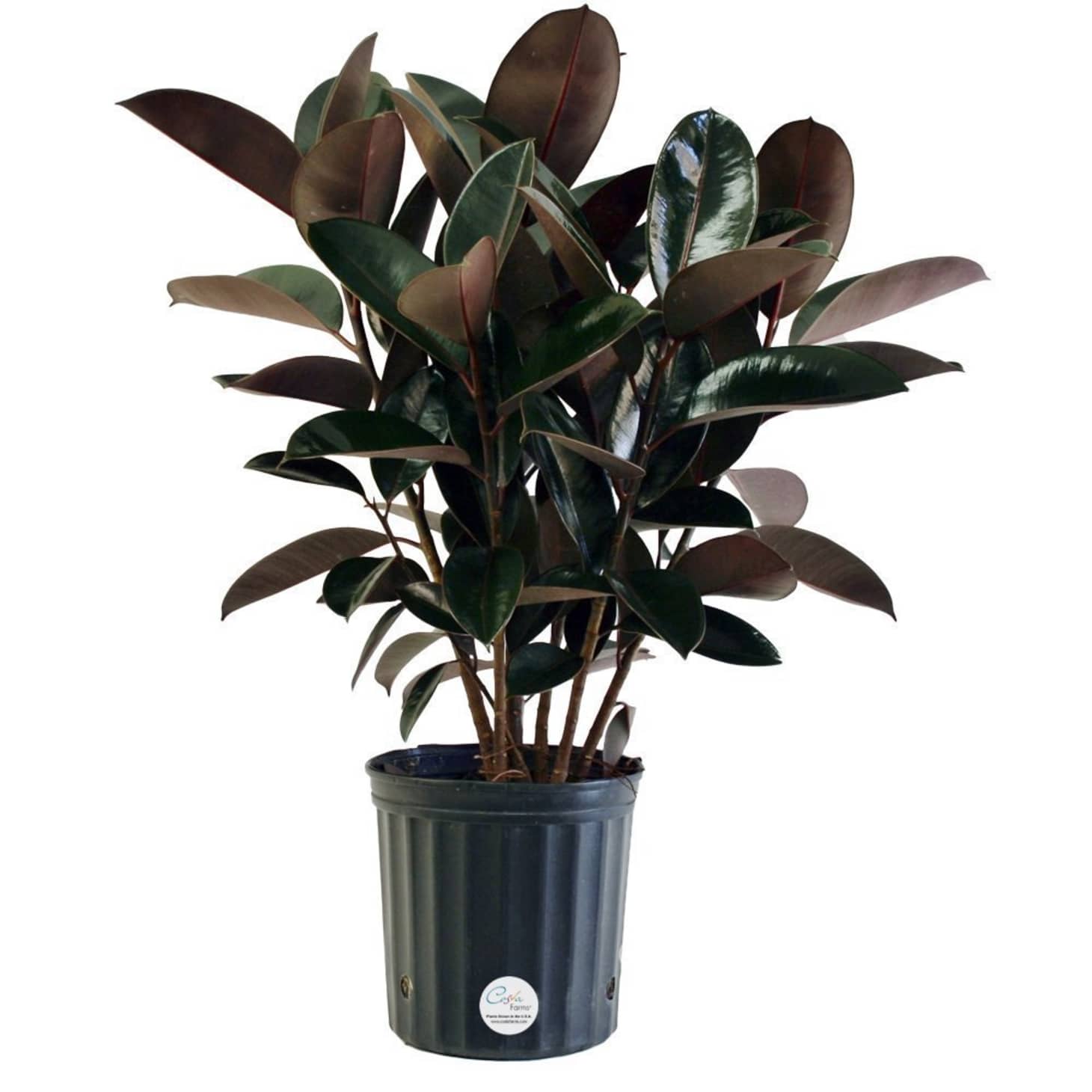The pink rubber tree plant, with its vibrant foliage and air-purifying properties, makes a striking addition to any indoor space. Its unique growth patterns and ease of care make it a popular choice for both novice and experienced plant enthusiasts alike.
In this comprehensive guide, we will delve into the fascinating world of the pink rubber tree plant, exploring its physical attributes, specific care requirements, and the myriad of ways in which it can enhance our living spaces.
Pink Rubber Tree Plant Characteristics

The Pink Rubber Tree (Ficus elastica ‘Pink Princess’) is a captivating houseplant renowned for its vibrant foliage and unique growth habits.
This tropical evergreen boasts a captivating appearance, reaching heights of up to 6 feet (1.8 meters) indoors. Its sturdy stems support large, glossy leaves that emerge as a vibrant pink hue, gradually maturing to a deep green with intricate variegations of pink, white, and cream.
Growth Patterns
Pink Rubber Trees exhibit vigorous growth, thriving in warm, humid environments with bright, indirect light. They prefer well-draining soil and regular watering, allowing the soil to dry out slightly between waterings.
Unique Features
One of the most striking features of the Pink Rubber Tree is its aerial roots. These roots extend from the plant’s stems and serve as additional support for the plant’s weight. Additionally, the plant produces a milky sap that can be irritating to the skin, so it’s essential to handle it with care.
Care and Maintenance

The pink rubber tree plant, with its captivating foliage and air-purifying abilities, thrives when provided with the appropriate care and maintenance. Understanding its specific requirements for lighting, temperature, humidity, watering, and fertilization is crucial for ensuring its optimal growth and health.
By following these guidelines, you can create an environment that fosters the well-being of your pink rubber tree plant, allowing it to flourish and add a touch of vibrant greenery to your indoor space.
Lighting
Pink rubber tree plants prefer bright, indirect light. Avoid placing them in direct sunlight, as this can scorch their leaves. East- or west-facing windows are ideal locations, providing ample natural light without the risk of excessive sun exposure.
Temperature and Humidity
These plants thrive in warm, humid environments. Optimal temperatures range between 65°F (18°C) and 80°F (27°C). They also appreciate high humidity levels, so consider using a humidifier or placing the plant on a tray filled with pebbles and water to increase the moisture in the air around it.
Watering, Pink rubber tree plant
Pink rubber tree plants prefer consistently moist soil but not waterlogged conditions. Allow the top 2-3 inches of soil to dry out before watering thoroughly. During the growing season (spring and summer), water more frequently, and reduce watering during the dormant season (fall and winter).
Fertilizing
Fertilize your pink rubber tree plant monthly during the growing season using a balanced liquid fertilizer diluted to half strength. Avoid over-fertilizing, as this can lead to nutrient burn.
Common Pests and Diseases
Pink rubber tree plants are generally resistant to pests and diseases, but they can occasionally be affected by mealybugs, spider mites, or scale. Regularly inspect your plant for signs of infestation and treat promptly with an appropriate insecticidal soap or neem oil.
Preventive Measures
To prevent pests and diseases, maintain good hygiene by regularly cleaning the plant’s leaves and removing any fallen leaves or debris from the pot. Ensure proper ventilation around the plant to prevent stagnant air, which can create a favorable environment for pests.
Uses and Applications: Pink Rubber Tree Plant
The pink rubber tree plant offers a wide range of uses and applications, making it a versatile and valuable addition to both indoor and outdoor spaces.
The plant’s striking foliage and low-maintenance nature make it a popular choice for ornamental purposes. Its glossy, variegated leaves add a touch of elegance to any room or garden. Whether placed in a well-lit corner of a living room or used as a focal point in a landscape design, the pink rubber tree plant is sure to make a statement.
Beyond its aesthetic appeal, the pink rubber tree plant also possesses air-purifying properties. Studies have shown that it can effectively remove harmful toxins from the air, including formaldehyde, benzene, and trichloroethylene. This makes it an ideal choice for homes, offices, and other indoor environments where air quality is a concern.
In addition to its ornamental and air-purifying uses, the pink rubber tree plant has also found applications in landscaping and crafts. Its large, glossy leaves make it a suitable choice for creating privacy screens or hedges, while its flexible stems can be trained to form unique shapes and structures. The plant’s sap can also be used as a natural adhesive or sealant, making it a useful tool for various craft projects.